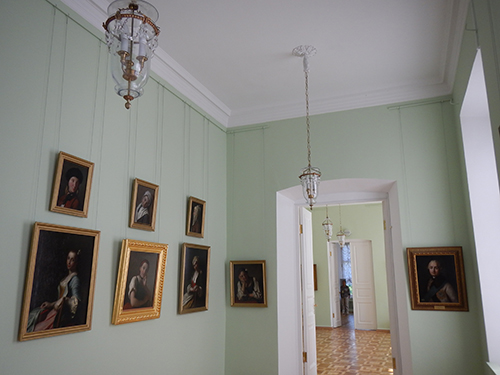Room of Pietro Antonio Rotari

The celebrated Italian painter Pietro Antonio Rotari (1707 � 1762) is best known in the arts for a multitude of exquisite �female heads� that became so characteristic of the Rococo decorative style. Very prolific, he produced hundreds of intimate portraits of almost identical size; a great many of them were placed in country palaces in Peterhof, Oranienbaum, and Gatchina.
Catherine II gifted a collection of Rotari�s works to Count Orlov. More of his works entered the Gatchina holdings up until the 1920s. The Rotari Room was introduced at the Gatchina Palace as part of the palace�s remodeling under Nicholas I, with works by the famous Italian being its main decorative feature.
On display in the room are both his well-known heads and portraits of princes of Saxony, the sons of Augustus III. Once the restoration of the Rotari room is completed, Rotari�s works will resume their original places.
See on interactive plan

The celebrated Italian painter Pietro Antonio Rotari (1707 � 1762) is best known in the arts for a multitude of exquisite �female heads� that became so characteristic of the Rococo decorative style. Very prolific, he produced hundreds of intimate portraits of almost identical size; a great many of them were placed in country palaces in Peterhof, Oranienbaum, and Gatchina.
Catherine II gifted a collection of Rotari�s works to Count Orlov. More of his works entered the Gatchina holdings up until the 1920s. The Rotari Room was introduced at the Gatchina Palace as part of the palace�s remodeling under Nicholas I, with works by the famous Italian being its main decorative feature.
On display in the room are both his well-known heads and portraits of princes of Saxony, the sons of Augustus III. Once the restoration of the Rotari room is completed, Rotari�s works will resume their original places.
See on interactive plan
